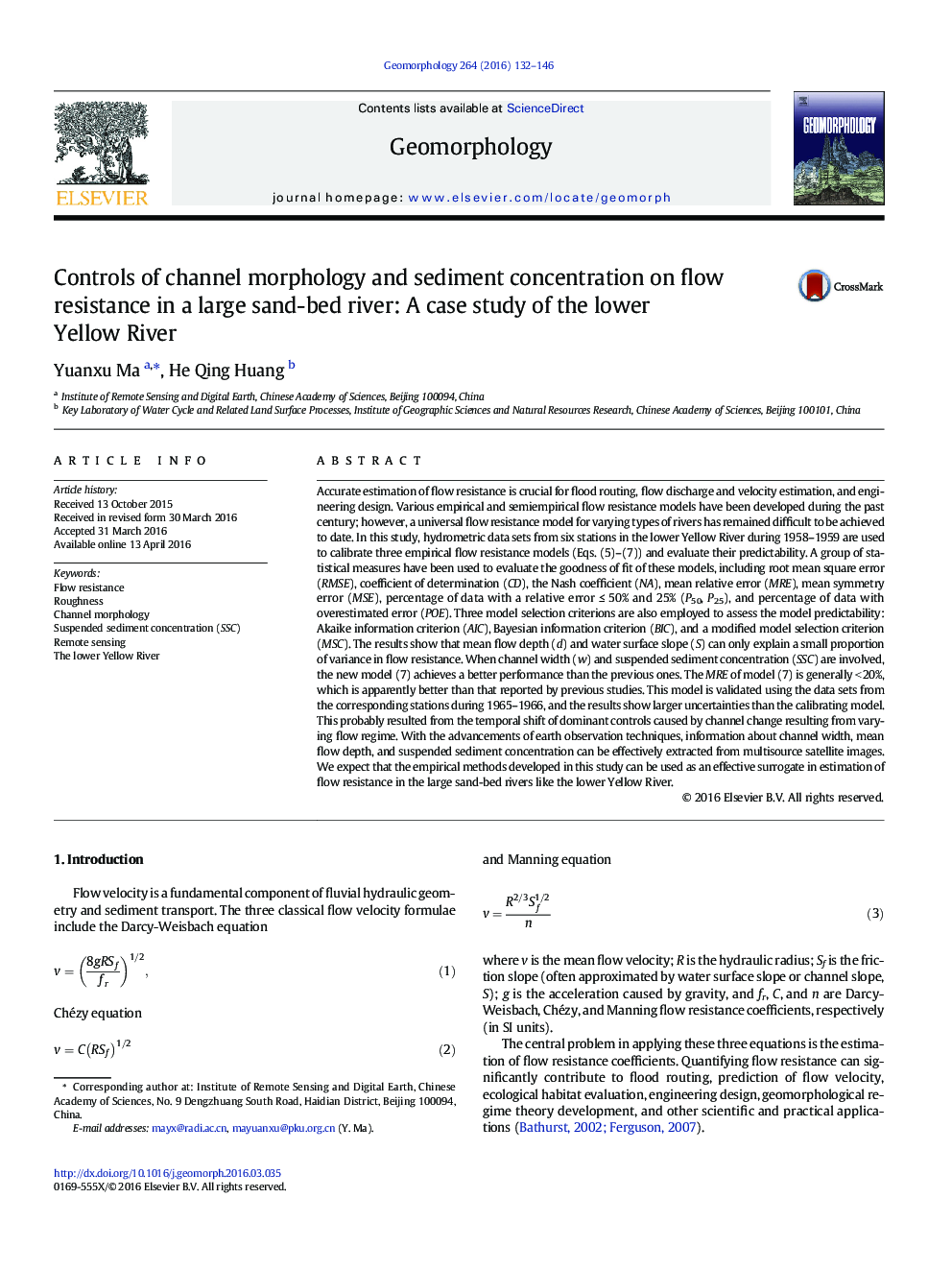| کد مقاله | کد نشریه | سال انتشار | مقاله انگلیسی | نسخه تمام متن |
|---|---|---|---|---|
| 6431612 | 1635385 | 2016 | 15 صفحه PDF | دانلود رایگان |
- Accurate estimation of flow resistance is crucial for flood routing.
- Three empirical models were proposed to estimate flow resistance.
- A number of statistical parameters were used to evaluate the goodness of fit.
- Channel width and suspended sediment concentration exert significant controls on flow resistance.
- Remote sensing could contribute to flow resistance estimation.
Accurate estimation of flow resistance is crucial for flood routing, flow discharge and velocity estimation, and engineering design. Various empirical and semiempirical flow resistance models have been developed during the past century; however, a universal flow resistance model for varying types of rivers has remained difficult to be achieved to date. In this study, hydrometric data sets from six stations in the lower Yellow River during 1958-1959 are used to calibrate three empirical flow resistance models (Eqs. (5)-(7)) and evaluate their predictability. A group of statistical measures have been used to evaluate the goodness of fit of these models, including root mean square error (RMSE), coefficient of determination (CD), the Nash coefficient (NA), mean relative error (MRE), mean symmetry error (MSE), percentage of data with a relative error â¤Â 50% and 25% (P50, P25), and percentage of data with overestimated error (POE). Three model selection criterions are also employed to assess the model predictability: Akaike information criterion (AIC), Bayesian information criterion (BIC), and a modified model selection criterion (MSC). The results show that mean flow depth (d) and water surface slope (S) can only explain a small proportion of variance in flow resistance. When channel width (w) and suspended sediment concentration (SSC) are involved, the new model (7) achieves a better performance than the previous ones. The MRE of model (7) is generally < 20%, which is apparently better than that reported by previous studies. This model is validated using the data sets from the corresponding stations during 1965-1966, and the results show larger uncertainties than the calibrating model. This probably resulted from the temporal shift of dominant controls caused by channel change resulting from varying flow regime. With the advancements of earth observation techniques, information about channel width, mean flow depth, and suspended sediment concentration can be effectively extracted from multisource satellite images. We expect that the empirical methods developed in this study can be used as an effective surrogate in estimation of flow resistance in the large sand-bed rivers like the lower Yellow River.
Journal: Geomorphology - Volume 264, 1 July 2016, Pages 132-146
